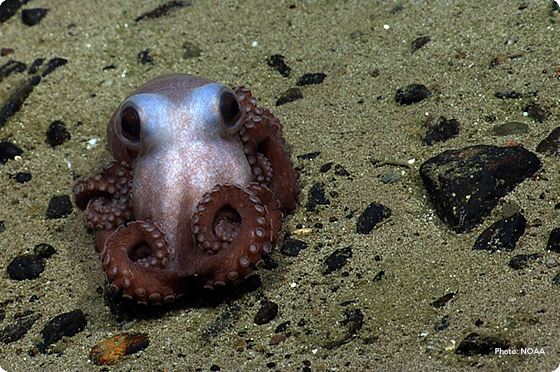
On June 5th, while on a visit to Maine, President Trump signed a proclamation that opens the Northeastern Canyons and Seamounts Marine National Monument to commercial fishing. This proclamation was made in hopes of helping the fishing industry bounce back after the nation's economic crisis, but it may lead to more legal battles before achieving this goal.
Northeastern Canyons and Seamounts Marine National Monument lies about 130 miles off the coast of Cape Cod, Massachusetts, and protects an area of canyon and mountain formations found below the water’s surface. This monument is home to an array of marine species, such as deep-sea corals, sea turtles, and even the endangered North Atlantic right whale.
In the last few months of his presidential term, President Obama designated this 4,913 square mile area as the first marine national monument in the Atlantic Ocean by using his authority under the Antiquities Act of 1906. This Act gives authority to the President to “declare by public proclamation historic landmarks, historic and prehistoric structures, and other objects of historic or scientific interest that are situated on land owned or controlled by the Federal Government to be national monuments.” 54 U.S.C. § 320301(a). President Obama’s proclamation allowed the monument to remain open for recreational fishing but prohibited commercial fishing with the exception of lobster and red crab fisheries, both of which were permitted to continue through a transition period until 2023.
Last Friday, President Trump reopened this monument to commercial fishing in response to the nation’s economic crisis by removing some of the provisions of President Obama’s proclamation. The commercial fishing industry has taken a hard hit this year from financial crises caused by the COVID-19 pandemic. With fewer people eating out and traveling, restaurants and hotels—two important markets for the industry—have had to close for a significant period of time and reduce their seafood purchases. President Trump signed this proclamation in hopes that reopening this monument to commercial fishing will boost the economy and create more jobs in the fishing industry. President Trump also tried to address some environmentalists’ fears by explaining that opening up the monument will not become a free-for-all, as the commercial fishing industry will still be regulated by a host of legislation such as the Endangered Species Act and the Magnuson-Stevens Fishery Conservation and Management Act.
President Trump’s proclamation will likely lead to legal battles over interpretation of the Antiquities Act before any economic benefit is realized. While the Antiquities Act gives the president the authority to establish national monuments, it is silent on whether a president may abolish or alter a national monument. Some environmental organizations are already prepared to bring legal action against the Trump administration, claiming that the reopening of a national monument may only be done by Congress and, therefore, the president overstepped his authority with this proclamation.
The administration, however, is not new to this sort of litigation. In 2017, President Trump reduced the size of two national monuments in Utah, ultimately resulting in a pending lawsuit over the president’s authority to do so. Moreover, Northeastern Canyons and Seamounts Marine National Monument has also been subject to litigation questioning whether it was properly created. In 2017 various commercial fishing groups brought legal action claiming President Obama improperly used the Antiquities Act to create a national monument with submerged lands. With both lawsuits still pending a final decision, the outcomes of these cases will likely influence how environmental organizations might challenge this most recent proclamation by the president.
President Trump’s reopening of the Northeastern Canyons and Seamounts Marine National Monument to commercial fishing generally comes as a success to commercial fishermen and a loss to environmentalists. The effects of this proclamation, however, may take some time to be felt. It is currently unknown how many commercial fishermen will actually make the 130-mile trek out to the monument’s boundaries.












